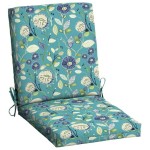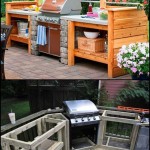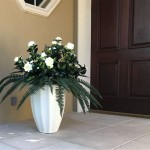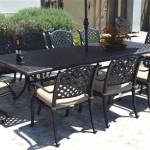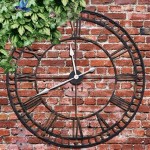How To Hang Outdoor Curtains On Your Deck
Outdoor curtains can transform a deck into a private, comfortable, and stylish extension of the home. They provide shade from harsh sunlight, offer a barrier against wind and insects, and enhance the overall aesthetics of the outdoor space. Successfully hanging outdoor curtains requires careful planning, the right materials, and a methodical approach to installation. This article details the necessary steps and considerations for achieving professionally hung outdoor curtains on a deck.
Choosing the Right Curtains and Hardware
The selection of appropriate curtains and hardware is paramount to a successful and long-lasting installation. Factors such as fabric type, size, and mounting hardware all play a critical role in performance and durability. Choosing the wrong materials can lead to premature wear, sagging curtains, and even damage to the deck structure.
Fabric Selection: Outdoor fabrics are specifically designed to withstand the elements. Common options include polyester, acrylic, and treated cotton blends. Polyester is cost-effective and resistant to fading, mildew, and water. Acrylic fabrics, such as Sunbrella, are known for their exceptional colorfastness and durability, making them ideal for areas with intense sun exposure. Treated cotton blends offer a more natural look and feel but often require regular maintenance to prevent mildew and fading. It is essential to consider the climate when selecting a fabric. In areas with frequent rain, quick-drying fabrics are preferable. For windy locations, heavier fabrics or curtains with weighted hems are recommended to prevent excessive movement.
Curtain Size and Style: Accurate measurements are crucial for ensuring a proper fit. Measure the height from the desired mounting point to the deck floor, accounting for any necessary clearance. Consider the width of the area to be covered and factor in extra fabric for fullness and potential shrinkage. Curtain styles vary widely, from grommet-top curtains that slide easily along a rod to tab-top curtains that create a more relaxed look. Pleated curtains offer a more formal appearance but may require specialized hardware. The choice of style often depends on personal preference and the overall aesthetic of the deck.
Hardware Considerations: The selection of durable, weather-resistant hardware is essential for a secure and long-lasting installation. Stainless steel, galvanized steel, and powder-coated aluminum are all excellent choices for outdoor use. Avoid using hardware that is prone to rust or corrosion, as this can weaken the structure and stain the curtains. Curtain rods should be sized appropriately for the weight and width of the curtains. Thicker rods are generally more robust and can support heavier fabrics. Consider using tiebacks or curtain holders to keep the curtains open when desired and prevent them from blowing excessively in the wind. For areas with high winds, consider using cable wire as a curtain rod, tensioned tightly between two secure points. This will minimize bowing and movement of the curtain rod.
Preparing the Deck Structure for Installation
Before hanging the curtains, it is essential to assess the deck structure and make any necessary preparations. This includes identifying suitable mounting points, ensuring structural integrity, and taking precautions to prevent damage during installation. Proper preparation will contribute to a stable and secure installation.
Identifying Mounting Points: The most common mounting points are deck posts, beams, or overhead structures such as pergolas or gazebos. If the deck lacks suitable support, it may be necessary to install additional posts or beams specifically for hanging the curtains. When choosing mounting points, consider the desired coverage area, the direction of sunlight, and the prevailing wind patterns. Ensure that the mounting points are structurally sound and capable of supporting the weight of the curtains and hardware. It is crucial to avoid attaching hardware directly to the deck railing, as this may not provide adequate support.
Ensuring Structural Integrity: Before drilling or attaching any hardware, inspect the mounting points for signs of rot, decay, or damage. If the wood is soft or compromised, it should be repaired or replaced before proceeding. Use a stud finder to locate the center of the posts or beams and ensure that the screws or bolts are securely anchored. For metal structures, inspect for rust or corrosion and treat accordingly. Reinforcing the mounting points with additional brackets or supports may be necessary for heavier curtains or areas with high winds.
Taking Precautions During Installation: When drilling into wood or metal, wear safety glasses to protect your eyes from debris. Use the appropriate drill bit size for the screws or bolts being used to prevent stripping or damage to the material. Apply a sealant or caulk to the drilled holes to prevent water from penetrating the wood and causing rot. When working at heights, use a sturdy ladder and ensure that it is properly positioned and secured. It is advisable to have a helper assist with the installation, especially when handling large or heavy curtains. Before starting the installation, disconnect any electrical wiring or plumbing that may be located near the mounting points. Always follow the manufacturer's instructions for the hardware and curtains being used.
Step-by-Step Installation Guide
The installation process involves accurately measuring, securely attaching hardware, and properly hanging the curtains to achieve desired functionality and aesthetic. Following a systematic approach will ensure professional results.
Accurate Measurement and Marking: Begin by accurately measuring the distance between the mounting points and marking the locations for the hardware. Use a level to ensure that the hardware is installed evenly and that the curtains will hang straight. Double-check the measurements before drilling any holes. For curtains with grommets or tabs, measure the distance between the grommets or tabs and use this information to determine the spacing between the support brackets. If using a cable wire, measure the distance between the posts and add a few inches for tensioning. Mark the locations for the cable supports using a level and a measuring tape.
Hardware Installation: Install the mounting brackets or supports according to the manufacturer's instructions. Use screws or bolts that are appropriate for the material being used (wood, metal, etc.). Ensure that the hardware is securely attached and can support the weight of the curtains. For curtain rods, slide the rod through the brackets and tighten the set screws to hold it in place. If using a cable wire, attach the cable supports to the posts using screws or bolts. Thread the cable wire through the supports and tighten the tensioners to achieve the desired level of tension. Over-tightening the cable wire can damage the posts or the supports, so use caution.
Curtain Hanging and Adjustment: Once the hardware is installed, hang the curtains according to the type of curtain being used. For grommet-top curtains, slide the grommets onto the curtain rod or cable wire. For tab-top curtains, loop the tabs over the rod. For pleated curtains, attach the hooks to the pleats and hang them on the rings or slides. Once the curtains are hung, adjust them as needed to achieve the desired look and functionality. Ensure that the curtains are evenly spaced and that they hang straight. Use tiebacks or curtain holders to keep the curtains open when desired. If the curtains are too long, consider hemming them to prevent them from dragging on the ground. Adjusting the tension of a cable wire may be required to ensure curtains maintain a desirable drape, particularly after initial installation as the fabric stretches over time.
By carefully selecting materials, preparing the deck structure, and following a systematic installation process, it is possible to successfully hang outdoor curtains and transform a deck into a comfortable and inviting outdoor living space. Regular maintenance will help to prolong the life of the curtains and hardware, ensuring that the deck remains a beautiful and functional part of the home for years to come.

Diy Floating Outdoor Curtain Rod Creating A Privacy Curtains For Deck

Diy Floating Outdoor Curtain Rod Creating A Privacy Curtains For Deck

Diy Floating Outdoor Curtain Rod Creating A Privacy Curtains For Deck

Diy Under Deck Outdoor Curtains For 20 This Is Our Bliss

Diy Floating Outdoor Curtain Rod Creating A Privacy Curtains For Deck

Choosing And Hanging Outdoor Curtains The Home

Diy Under Deck Outdoor Curtains For 20 This Is Our Bliss

Diy Floating Outdoor Curtain Rod Creating A Privacy Curtains For Deck

How To Make Outdoor Curtain Rods Four Generations One Roof

How To Hang Outdoor Sheer Curtains The Easy Way South House Designs




